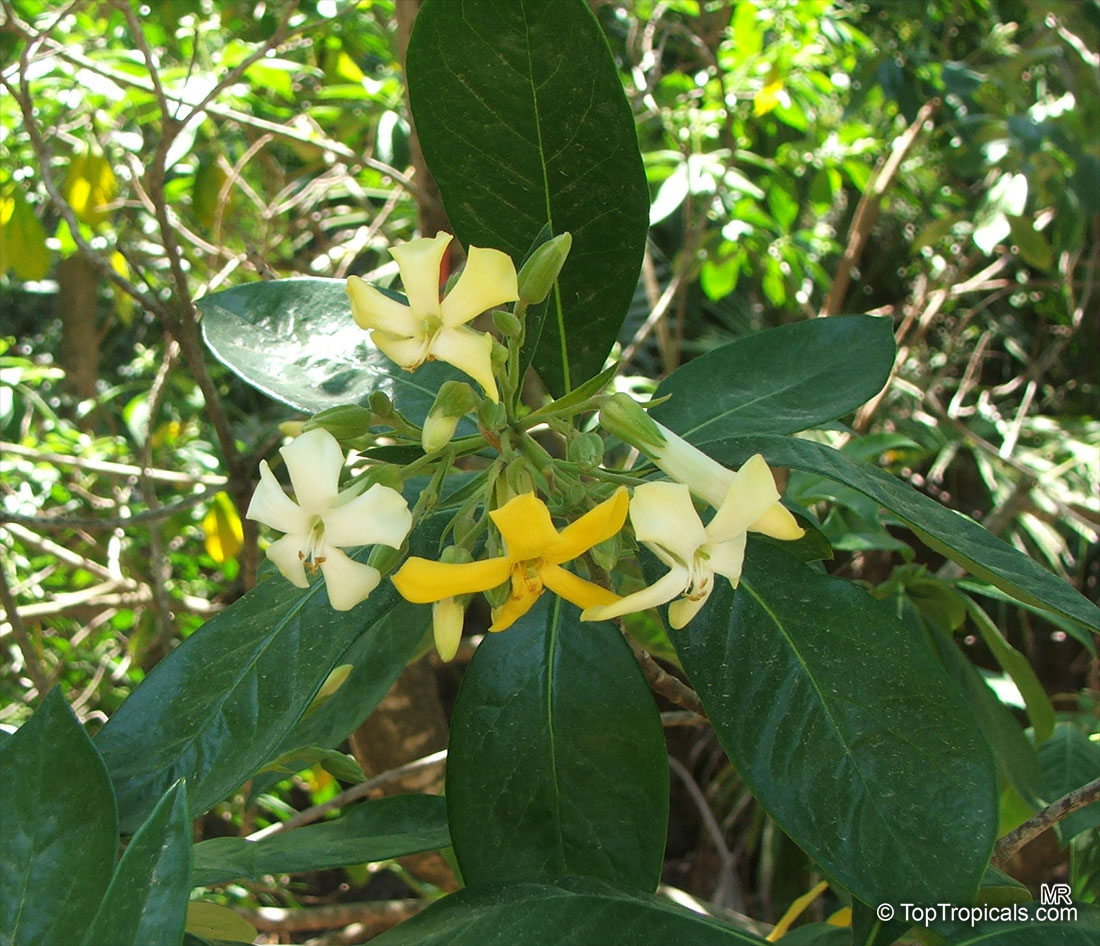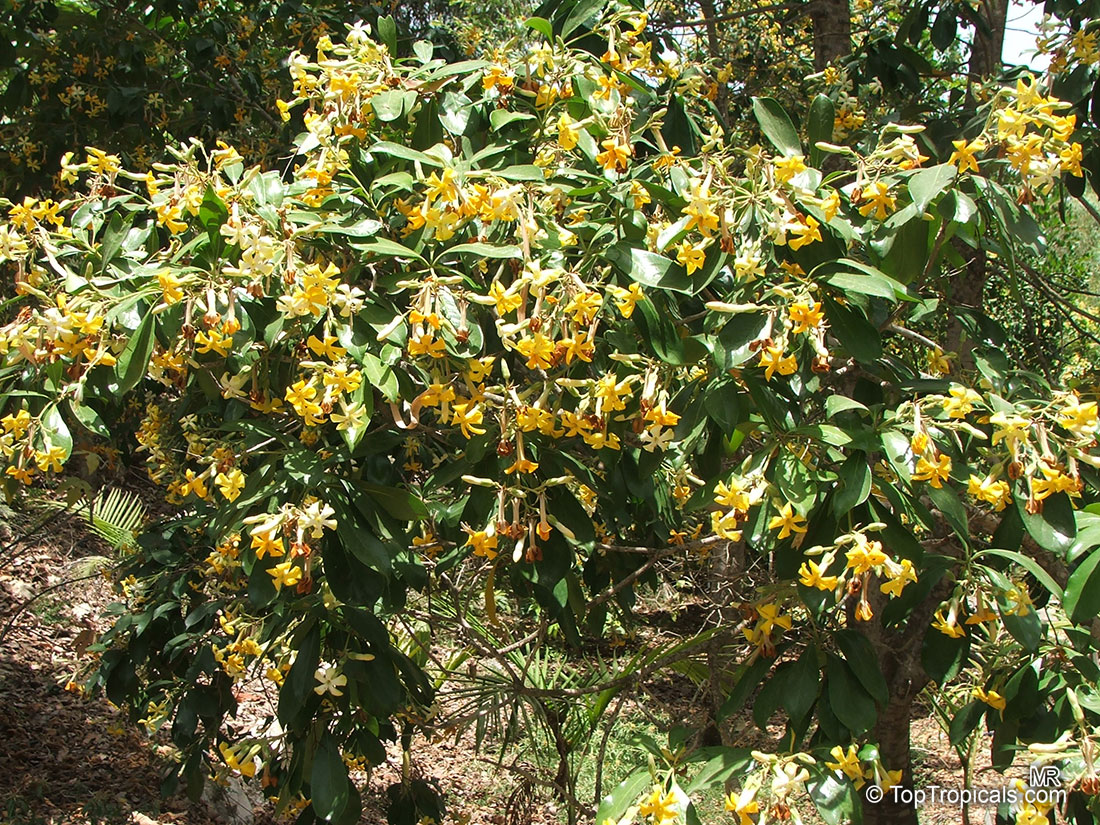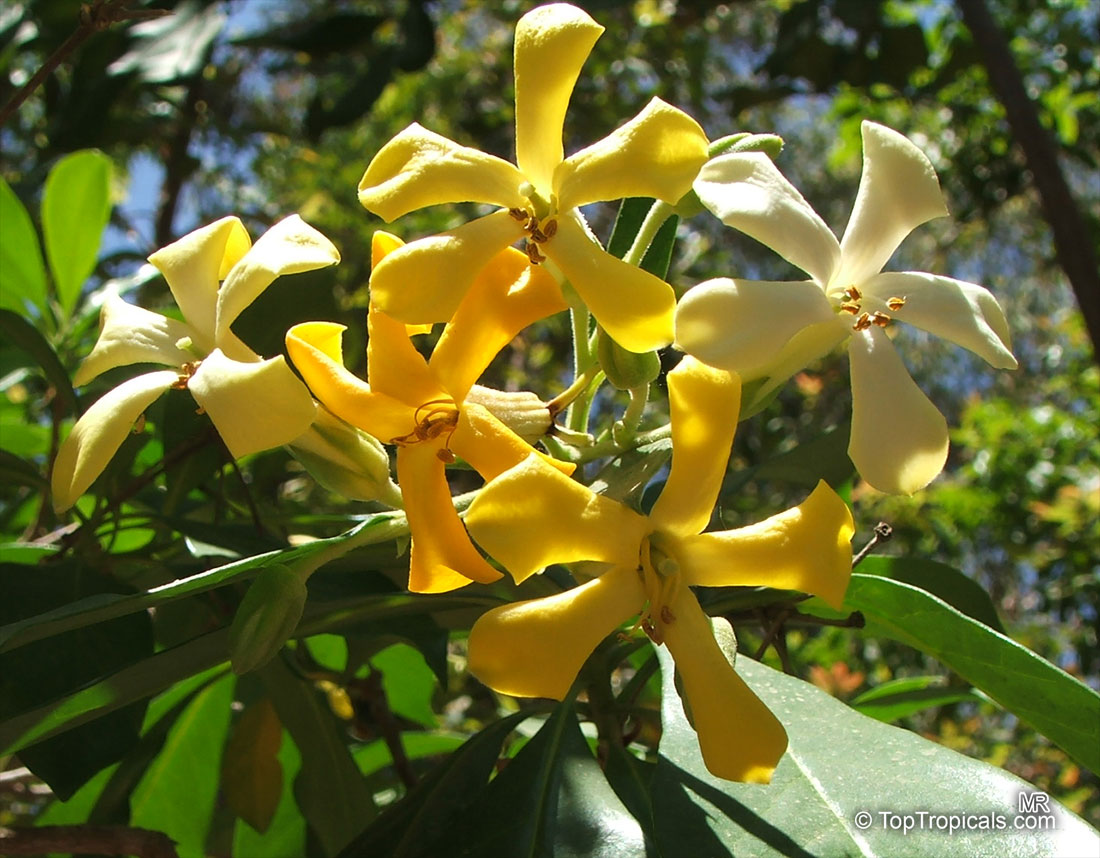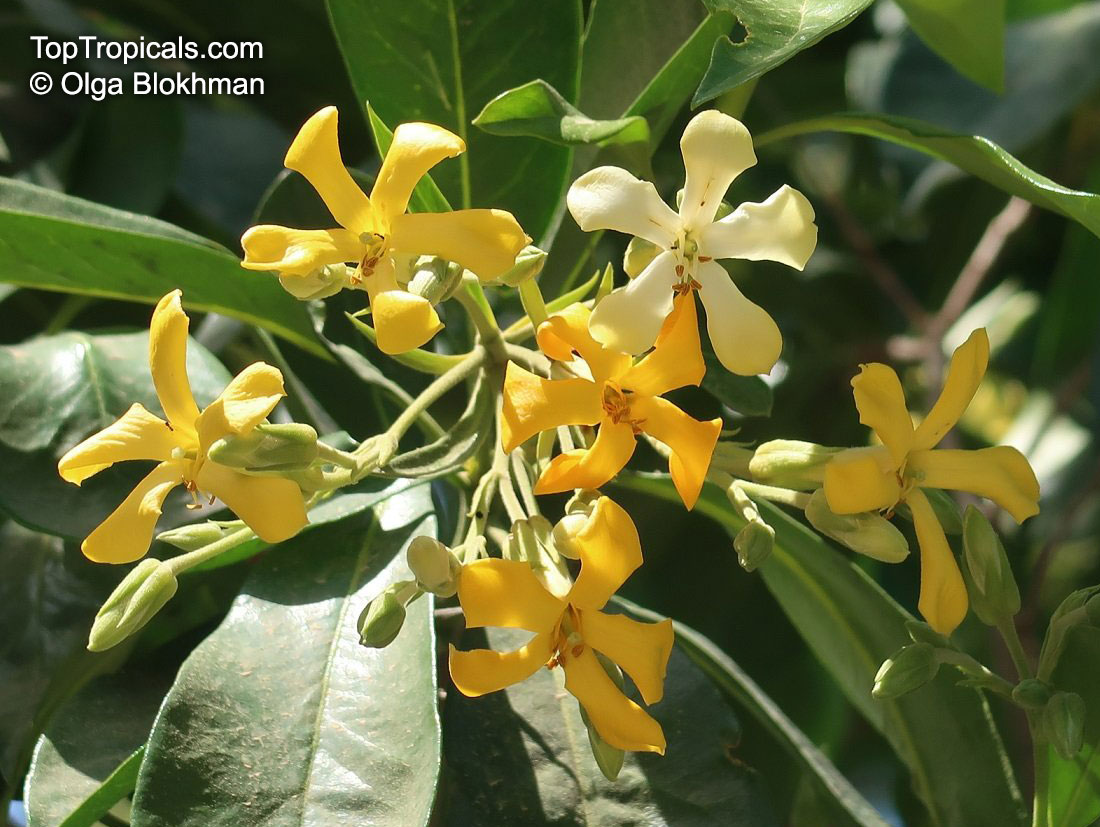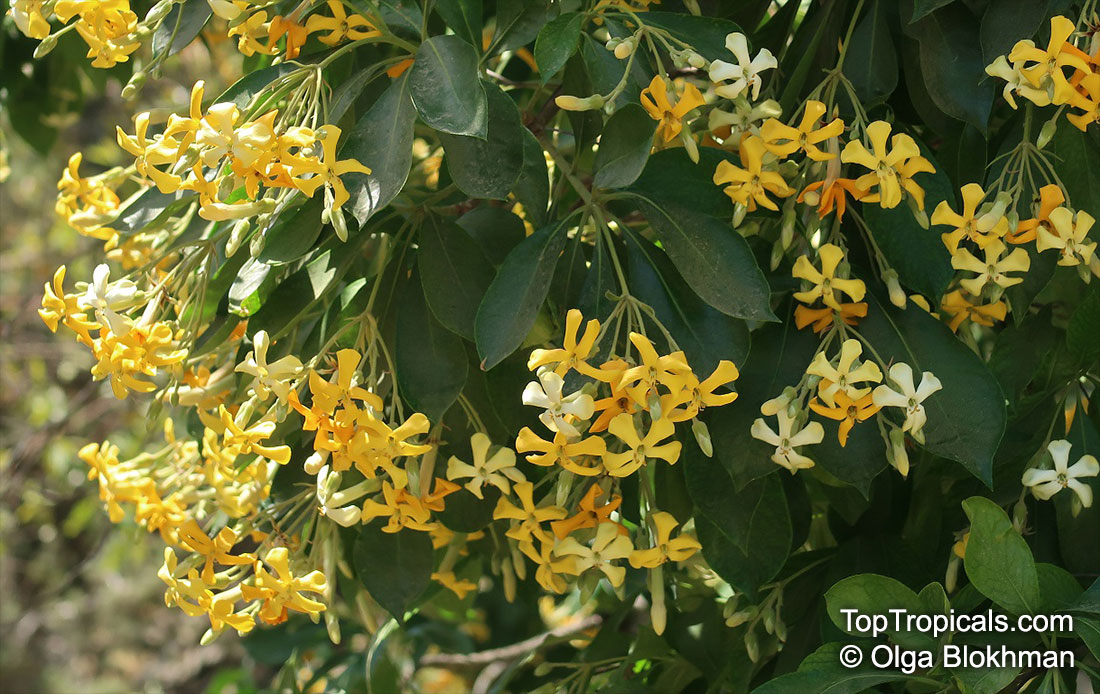Hymenosporum flavum
Native Frangipani, Queensland Frangipani, Sweet Cheesewood, SweetshadeFamily: Pittosporaceae
Origin: Australia








A medium-sized evergreen tree, up to 18-21ft tall. It is the only member of the genus Hymenosporum (from the Greek hymen (membrane) and sporos (seed), referring to the membranaceous wing on the seed). It is a popular garden subject because of its glossy foliage and flowers. Leaves are simple, alternate 2" - 6", soft, dark green above, paler and sometimes a little hairy below. Juvenile leaves toothed. Flowers are the heavily perfumed cream darkening to yellow on slender stalks at ends of branch lets, the flowers are also known to attract birds and bees; however, be aware this tree can be messy when the flowers begin to drop off. Blooming time is March - November. Fruits of brown irregular capsules splitting into 2 to reveal numerous flat winged seeds. Not edible fruits are ripen in December - April. Propagation: Seed germinates within a few weeks. Best planted in a sunny, wind-protected area, watering needs 4 times monthly. The hymenosporum flavum can tolerate semi-shade conditions. During the early years, it is best to stake the tree to ensure a straight trunk. Hymenosporum flavum seeds are flat and have a papery wing with the small pod at the tip of the seed. They will take up to two months to germinate with a high percentage of germination, it is always best to try for fresh seed with natives but you might be lucky with the packet ones. A fast growing evergreen medium to tall shrub or small tree with dark green glossy leaves. Perfect for any garden, landscape or street planting.



